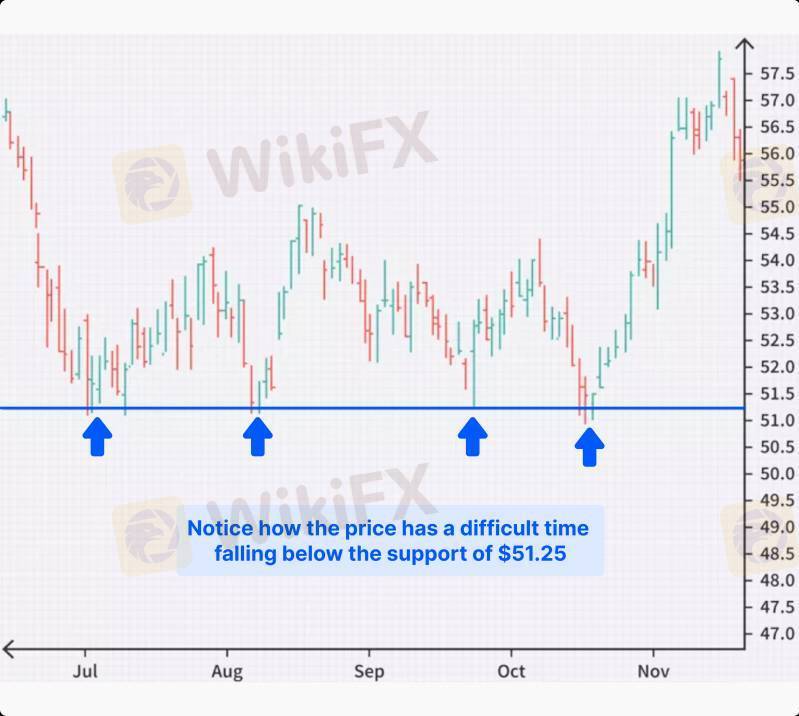
2025-01-14 03:30
IndustryUnderstanding Forex Liquidity and Market Hours
#firstdealoftheyearchewbacca#
Understanding Forex liquidity and market hours is crucial for successful trading as they directly influence the ease of executing trades, price movements, and overall trading strategy.
---
1. Forex Liquidity
Liquidity in Forex refers to the ability to buy or sell currency pairs without causing significant price movements.
Key Aspects of Forex Liquidity:
High Liquidity:
Occurs when there is a large number of buyers and sellers in the market.
Results in tighter spreads (smaller difference between bid and ask prices).
Common in major currency pairs like EUR/USD, GBP/USD, and USD/JPY.
Low Liquidity:
Occurs in exotic currency pairs or during certain times of the day.
Results in wider spreads and potential slippage.
Factors Influencing Liquidity:
1. Market Hours: Liquidity peaks during active trading sessions (London, New York).
2. Economic News: Releases like non-farm payrolls (NFP) or interest rate decisions can temporarily increase liquidity and volatility.
3. Currency Pair: Major pairs are more liquid than minors and exotics.
4. Market Participants:
Central banks and institutional traders provide deep liquidity.
Retail traders contribute a smaller share.
---
2. Forex Market Hours
The Forex market operates 24 hours a day, 5 days a week, because it spans multiple time zones. It is divided into four major trading sessions:
---
Best Times to Trade Forex:
1. Overlapping Sessions:
London/New York (1:00 PM - 5:00 PM UTC):
Most liquid period; major currency pairs see higher volume.
Tokyo/London (8:00 AM - 9:00 AM UTC):
Moderate liquidity; may see volatility in JPY and EUR pairs.
2. Avoid Low Liquidity Periods:
Friday afternoons: Traders close positions ahead of the weekend.
Holidays: Liquidity drops as institutional players exit the market.
---
3. Impact of Market Hours on Liquidity
Higher Liquidity During Overlaps:
More active participants mean better execution and tighter spreads.
Low Liquidity After Market Closures:
Spreads widen, and prices can be erratic.
---
4. Tips for Traders
1. Trade During High Liquidity:
Focus on London and New York sessions for better pricing.
2. Monitor Economic Calendars:
Trade around news releases for potential liquidity surges.
3. Choose Liquid Currency Pairs:
Stick to major pairs for lower costs and predictable behavior.
4. Understand Your Broker’s Spread Dynamics:
Some brokers widen spreads during low-liquidity periods.
By aligning trading activities with peak liquidity periods and understanding the impact of market hours, traders can optimize their strategies for better outcomes. Let me know if you’d like more details or trading tips!
Like 0
bossbaby6527
Trader
Hot content
Industry
Event-A comment a day,Keep rewards worthy up to$27
Industry
Nigeria Event Giveaway-Win₦5000 Mobilephone Credit
Industry
Nigeria Event Giveaway-Win ₦2500 MobilePhoneCredit
Industry
South Africa Event-Come&Win 240ZAR Phone Credit
Industry
Nigeria Event-Discuss Forex&Win2500NGN PhoneCredit
Industry
[Nigeria Event]Discuss&win 2500 Naira Phone Credit
Forum category

Platform

Exhibition

Agent

Recruitment

EA

Industry

Market

Index
Understanding Forex Liquidity and Market Hours
 Nigeria | 2025-01-14 03:30
Nigeria | 2025-01-14 03:30#firstdealoftheyearchewbacca#
Understanding Forex liquidity and market hours is crucial for successful trading as they directly influence the ease of executing trades, price movements, and overall trading strategy.
---
1. Forex Liquidity
Liquidity in Forex refers to the ability to buy or sell currency pairs without causing significant price movements.
Key Aspects of Forex Liquidity:
High Liquidity:
Occurs when there is a large number of buyers and sellers in the market.
Results in tighter spreads (smaller difference between bid and ask prices).
Common in major currency pairs like EUR/USD, GBP/USD, and USD/JPY.
Low Liquidity:
Occurs in exotic currency pairs or during certain times of the day.
Results in wider spreads and potential slippage.
Factors Influencing Liquidity:
1. Market Hours: Liquidity peaks during active trading sessions (London, New York).
2. Economic News: Releases like non-farm payrolls (NFP) or interest rate decisions can temporarily increase liquidity and volatility.
3. Currency Pair: Major pairs are more liquid than minors and exotics.
4. Market Participants:
Central banks and institutional traders provide deep liquidity.
Retail traders contribute a smaller share.
---
2. Forex Market Hours
The Forex market operates 24 hours a day, 5 days a week, because it spans multiple time zones. It is divided into four major trading sessions:
---
Best Times to Trade Forex:
1. Overlapping Sessions:
London/New York (1:00 PM - 5:00 PM UTC):
Most liquid period; major currency pairs see higher volume.
Tokyo/London (8:00 AM - 9:00 AM UTC):
Moderate liquidity; may see volatility in JPY and EUR pairs.
2. Avoid Low Liquidity Periods:
Friday afternoons: Traders close positions ahead of the weekend.
Holidays: Liquidity drops as institutional players exit the market.
---
3. Impact of Market Hours on Liquidity
Higher Liquidity During Overlaps:
More active participants mean better execution and tighter spreads.
Low Liquidity After Market Closures:
Spreads widen, and prices can be erratic.
---
4. Tips for Traders
1. Trade During High Liquidity:
Focus on London and New York sessions for better pricing.
2. Monitor Economic Calendars:
Trade around news releases for potential liquidity surges.
3. Choose Liquid Currency Pairs:
Stick to major pairs for lower costs and predictable behavior.
4. Understand Your Broker’s Spread Dynamics:
Some brokers widen spreads during low-liquidity periods.
By aligning trading activities with peak liquidity periods and understanding the impact of market hours, traders can optimize their strategies for better outcomes. Let me know if you’d like more details or trading tips!
Like 0
I want to comment, too
Submit
0Comments

There is no comment yet. Make the first one.

Submit
There is no comment yet. Make the first one.